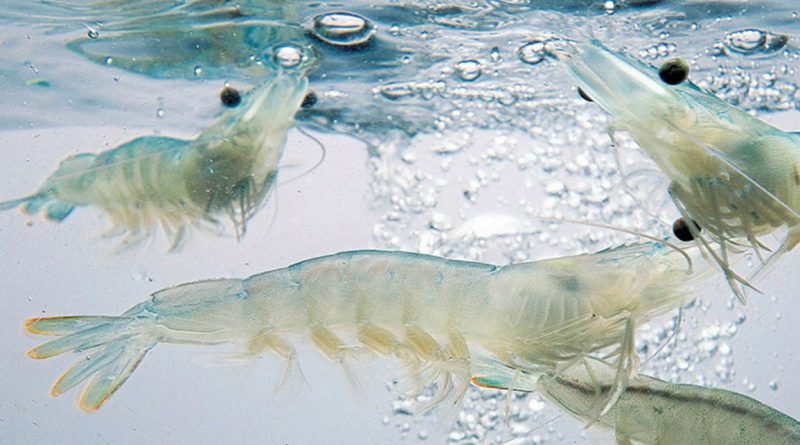Microorganisms to antagonistic V. Parahaemolyticus causing the Early mortality disease on Shrimp.
Result of Vibrio Parahaemolyticus:
- From the isolated bacterial strains, 3 strains were selected TA7L1, TA1L1 and TA9L3 capable of inhibiting Vibrio parahaemolyticus causing the disease on shrimp. Identification results show that all strains belong to Lactobacillus plantarum. Lactobacillus plantarum has the ability to inhibit and destroy V. parahaemolyticus at concentration 103 – 104 CFU/ml on liquid nutrient medium.
- Addition of Lactobacillus plantarum to the culture of infected Vannamei shrimp showed significant efficacy in inhibiting Vibrio Parahaemolyticus on an experimental scale in an artificial shrimp tank, reduce shrimp mortality caused by Hepatopancreatic Necrosis syndrome.


Fig 1. Shrimp in the control treatment only supplemented with V. parahaemolyticus

Fig 2. Shrimp in all treatments after 10 days of experiment.
A: Control treatment without supplemented microorganisms.
B: Treatment supplemented TA7L1 + V. parahaemotyticus.
C : Treatment supplemented TA1L1 + V. parahaemotyticus.
D : Treatment supplemented TA7L1 + TA1L1 + V. parahaemotyticus.)
- From the isolated bacterial strains, 3 strains were selected TA7L1, TA1L1 and TA9L3 capable of inhibiting Vibrio parahaemolyticus causing the disease on shrimp. Identification results show that all strains belong to Lactobacillus plantarum. Lactobacillus plantarum has the ability to inhibit and destroy V. parahaemolyticus at concentration 103 – 104 CFU/ml on liquid nutrient medium.
- Addition of Lactobacillus plantarum to the culture of infected Vannamei shrimp showed significant efficacy in inhibiting Vibrio Parahaemolyticus on an experimental scale in an artificial shrimp tank, reduce shrimp mortality caused by Hepatopancreatic Necrosis syndrome.
- From the isolated bacterial strains, 3 strains were selected TA7L1, TA1L1 and TA9L3 capable of inhibiting Vibrio parahaemolyticus causing the disease on shrimp. Identification results show that all strains belong to Lactobacillus plantarum. Lactobacillus plantarum has the ability to inhibit and destroy V. parahaemolyticus at concentration 103 – 104 CFU/ml on liquid nutrient medium.
- Addition of Lactobacillus plantarum to the culture of infected Vannamei shrimp showed significant efficacy in inhibiting Vibrio Parahaemolyticus on an experimental scale in an artificial shrimp tank, reduce shrimp mortality caused by Hepatopancreatic Necrosis syndrome.

